BOSTON, LINCOLNSHIRE
Grid Ref: TF 325 437
23 July 2003
 |
|
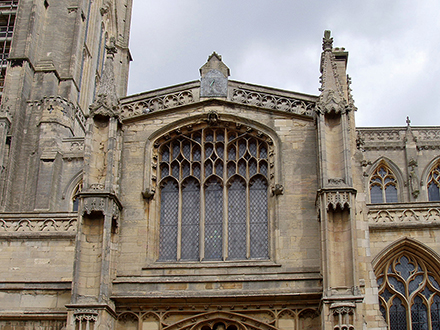 |
| The tower of St. Botolph's |
|
The upper storey of the porch was the parish library |
 |
|
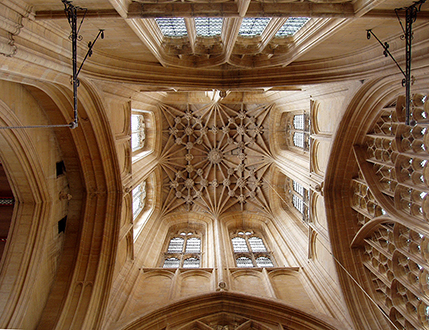 |
| The Chancel |
|
View up inside the lantern tower |
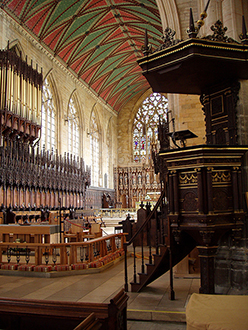 |
|
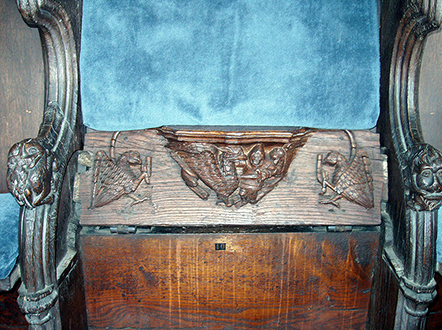 |
| Pulpit and choir |
|
A misericord with a knight slaying a griffin with two eagles |
 |
|
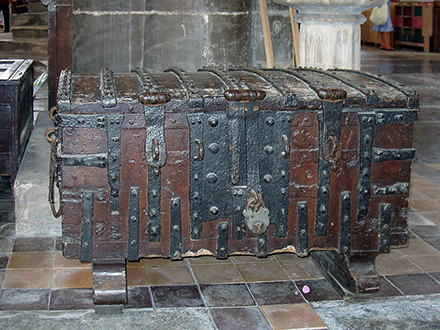 |
| View across the nave looking West |
|
Fine example of a parish chest |
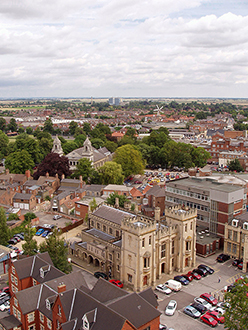 |
|
 |
| View of the town from the tower |
|
View of the open-air market from the tower |
Boston lies on the Lincolnshire coast and is not on a main route
across England. You have to make a special point of going to Boston but you
are beckoned by the distant view of the church tower, known as "Boston Stump"
and well rewarded on arrival. Boston is a bustling market town with one of
the finest parish churches in England, St. Botolph's. It has the highest parish church tower (as opposed to spire) in England at 272 feet. In 2003, Boston was still beyond the reach of the Chelsea
set weekenders who have invaded Norfolk, bought holdiday homes and rendered
its villages empty during the week and in the winter. It has an old world
charm that is attractive to the more seasoned English traveller. On a weekday
in July it was pleasing to see that the church had many visitors to admire
the architecture, ascend the tower for its magnificent views, and enjoy a
cake and a cup of tea at the west end of the nave under the tower. The church
is open daily and a photography permit can be obtained for £1. It is
good to see a church being used instead of being shut for all but a couple
of hours a week.
Boston is said to take its name from Botolph's town, as St.
Botolph is believed to have founded a monastery there in 654. In the Mediaeval
period, Boston was one of the foremost ports in England with a wealthy hinterland.
Trade and agriculture brought the wealth that built the church. The town had
a charter from King John in 1204. For a short period in the late 13th century
the taxes collected at Boston exceeded those of the port of London and by
1300 it was the principal port of the realm.
The main part of the church was begun in 1309 at the peak of
Boston's prominence as a port, and is built in the "Decorated" style.
Boston suffered not only in the Black Death of the 1340s but also had a repeat
visit of the plague in 1361. The population did not recover to its former
level for a century. The church has a nave and two aisles. The nave was completed
in 1390. The church has the biggest floor area of any parish church in England
at just over 20,000 square feet. The two bays at the eastern end of the chancel
were built in the 15th century. The tower was started in 1425 and built in
stages over the period to 1520; it is 272 feet high. Stone for the construction
came from near Stamford in Lincolnshire and was probably transported by boat
on the River Welland to the Wash and back up the River Witham. Much of the
building work was supported by the town's Corpus Christi guild.
The church has a number of features that relate to the calendar.
There are said to be 365 steps to the top of the tower, 12 pillars, 7 doors,
52 windows, and 24 steps leading to the library above the porch and 60 steps
from the chancel to the roof. I did not count them but it's a good story.
The pulpit dates from 1612. The choir stalls in the chancel
were made about 1390 and include some very fine carved misericords. However,
the canopies above the stalls, shown in the picture at the bottom left, were
erected between 1853 and 1860 by the ubiquitous architect Sir George Gilbert
Scott. The reredos, seen in the distance in my photograph of the chancel,
was built between 1890 and 1914. The altar rails are said to date from 1654.
This date is unusual in that some altar rails removed at the Reformation were
replaced in the reign of Charles I as part of the return to former practices
under William Laud, who was Archbishop of Canterbury from 1633 to 1645. By
1654 the Civil War was over and both Charles and Archbishop Laud were dead.
The bright red and green ceiling of the chancel dates from the 18th century.
The font is by Pugin and dates from 1853.
The church has 10 bells the heaviest is just over a ton or 1,062
kg. There is also a clock that has no face but chimes the hours and quarters
with a carillon of 15 bells. Under the tower are monuments of interest to
American and Australian visitors. The Australian has the arms of the Australia
at the top and reads:
In Proud Memory of George Bass, surgeon, once of this town and of
others who lived nearby and with him bore a gallant part in the exploration
of Australia. Joseph Banks of Mareham le Fen, Peter Briscoe of Revesby who sailed
in HMS Endeavour. Joseph Gilbert Astronomer of the Wrangler and Robert Rollett
of this town who served on Cook's second expedition. Matthew Flinders of Donington,
Robert Fowler of Horncastle, Samuel Flinders of Donington, John Franklin whose
parents were married in this church, who were among the officers of HMS Investigator.
They were honoured in their generations and were the glory of their times.
Boston in the USA was founded by people from Boston in Lincolnshire
who set sail in 1620, ten years after the Pilgrim Fathers set out in the Mayflower.
There is a monument to early governors that reads as follows:
To perpetuate the memory of five men associated with this town who
became governors of Massachusetts. Richard Bellingham, MP for Boston in 1625
and recorder 1625 to 1633, Governor 1641, 1654 and 1665-1672. Thomas Dudley,
steward to the Earl of Lincoln, Governor 1634, 1640, 1645 and 1650. Simon Bradstreet,
son-in-law of Thomas Dudley and his successor as steward, Governor 1679-1686
and 1689-1692. John Leverett, baptised in this church July 1616, Governor 1673
to 1679. Francis Bernard, deputy recorder of Boston 1754-8, the last of the
Royal Governors, 1760-1769.
 |
 |
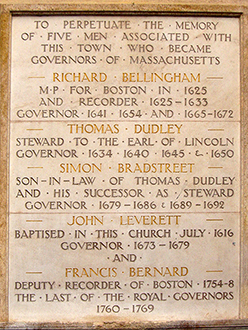 |
| Monument to Explorers of Australia |
|
Monument to Governors of
Massachusetts |
Sources:
Welcome to St. Botolph's Church, pamphlet in the
church
Why Boston Stump? A ten minute guide to the Boston Parish Church,
compiled by John Orange in 1978, pamphlet available in the church for 30 pence.
A Ten Minute Guide to the Choir Stalls and Misericords,
compiled by John Orange in 1980, pamphlet available in the church for 35 pence.
Lincolnshire Churches Revisited by Henry Thorold with black
and white photographs by Peter Burton & John Piper, published by Michael
Russell, Salisbury, 1989, ISBN 0 85955 157 1, features a picture of Boston
church on the dust jacket.












